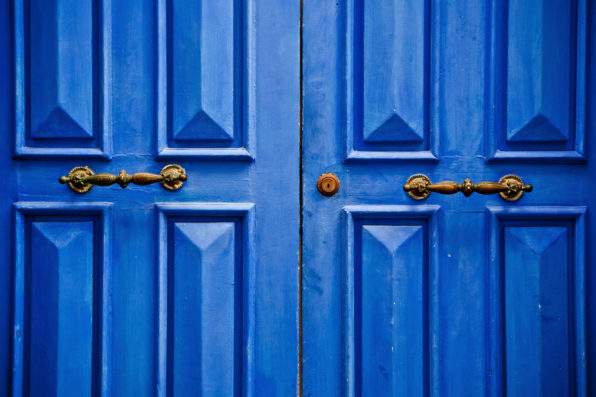The Spiritual Meaning Behind The Color Blue, And How To Make This Hue Work For You In Everyday Life

The following column is the opinion and analysis of the writer, Katharina Buczek.
When it comes to colors, everyone has their own unique associations with different hues. Depending on past experiences or memories, the color blue might remind you of sprawling seashores or a depressing thunderstorm.
Regardless of our own connotations, though, this hue holds many spiritual meanings– both positive and negative. Plus, once we understand the symbolism behind blue, we can use it to our advantage.
Behind The Color Blue
Blue is often regarded as “the world’s favorite color” for quite obvious reasons. About 71% of the earth is made of water, a chemical compound that appears blue due to light refraction. And most days, blue skies also dominate much of our waking hours.
On the flip side, though, the hue does not always hold such light and airy associations. Many people use the word as an adjective– for instance, “I’m feeling a little blue”– to describe feelings of sadness. Even Pablo Picasso dedicated an entire series of paintings to this all-too-common feeling, calling this era in his career his “blue period.”
But, as with most things in life, the psychology behind the color blue is not so black and white. Instead, shades can also impact the hue’s meaning and symbolism.
Light blue, for instance, is known to be associated with truth and acceptance; meanwhile, indigo– which is a darker blue– has been tied to intuition.
Other positive meanings of the color blue as a whole include serenity, peace, healing, and calmness. Conversely, negative symbolism includes depression, coldness, loneliness, and melancholy.

cineuno – stock.adobe.com – illustrative purposes only
Now, you might be wondering why color symbolism even matters. Well, if we look inward and assess the presence of blue in various areas of our life, we might be able to gain more insight into our current situations.
Blue’s Spiritual Meaning
The spiritual implications of blue heavily depend on the context where the hue is present. So, let’s break down a few common circumstances.
If you dream about the color blue, for instance, this theme could have a variety of implications for your current emotional state. The most common blue dreams involve water, and water dreams tend to reflect our subconscious feelings.
So, are you dreaming of clear water or murky water? Are the waves calm or turbulent? Finally, what shade is the water– light and sparkling or dark and cloudy? These details can give you insight into how you are feeling about a life event, relationship, or unraveling situation.
Another realm in which blue has abundant meaning is in romantic relationships. If you notice that the hue is pervasive in your love life, then you or your partner might actually have a blue aura. In other words, your relationship might be ripe with good communication.
This association stems from the fact that blue is tied to the truth– which relies on open communication and honesty. So, people who have blue auras tend to be creative, trustworthy, and calm people who are known to be good at showing love and giving comfort.
Finally, in terms of feng shui, blue can make or break your humble abode. Of course, the color is heavily tied to the sky, and our oceans– which means blue is often representative of wonder, vastness, calm, and peace.
At the same time, though, if you often feel lonely or down at home, blue may exacerbate these negative feelings. So, before you incorporate blue hues into your home decor, it is important to practice self-awareness and take stock of your current mental state.
How To Make Blue Work For You
There are many ways to bring blue into your life and unlock the color’s positive meanings.
Primarily, if you dabble in crystals, adding blue crystals– such as sodalite, blue lace agate, or lapis lazuli– to your repertoire can help you enhance personal expression. Many people use sodalite for healing; meanwhile, blue lace agate is known to foster strong communication, and lapis lazuli is associated with strength, wisdom, truth, and intellect.
On a similar note, burning a blue candle in your home can achieve a similar result. Light blue candles are best for promoting truth and helping you accept situations; meanwhile, indigo candles can encourage you to trust your intuition.
Finally, as we mentioned before, you can always add more blue to your home decor– whether that be in the form of wall art or throw pillows. Just be sure that the blue is not overpowering, especially if you struggle with feelings of sadness or loneliness.
And, as always, you can also reap the benefits of blue by getting out into the natural world. You can go for a swim in your nearest lake or hike under a bright blue sky on a sunny day. At the very least, these excursions will promote feelings of calmness, peace, and serenity.
If true crime defines your free time, this is for you: join Chip Chick’s True Crime Tribe
Sign up for Chip Chick’s newsletter and get stories like this delivered to your inbox.
More About:Advice





